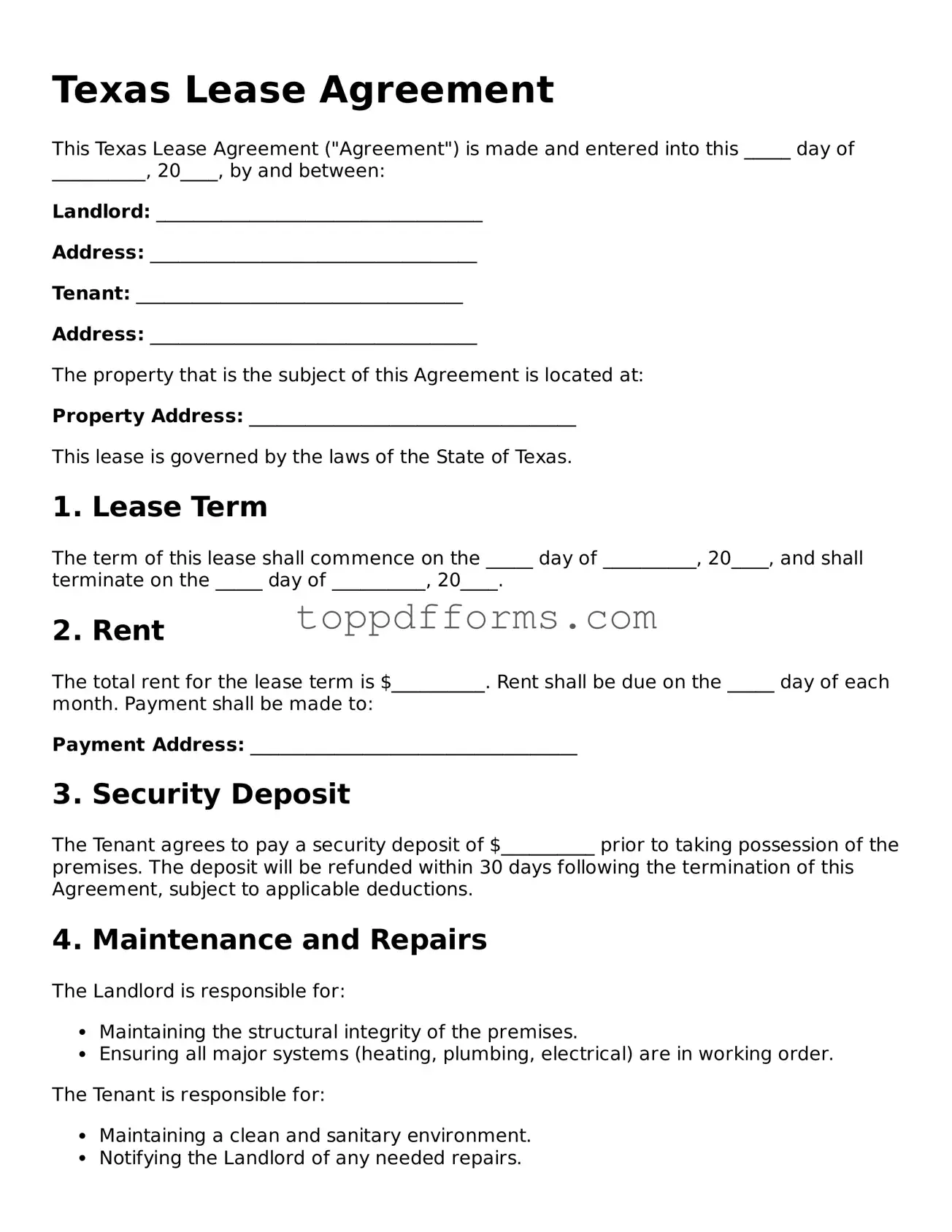What is a Texas Lease Agreement?
A Texas Lease Agreement is a legal document that outlines the terms and conditions under which a landlord rents property to a tenant in Texas. This agreement typically includes details such as the rental amount, duration of the lease, and responsibilities of both parties. It serves to protect the rights of both landlords and tenants while providing a clear framework for the rental relationship.
What are the key components of a Texas Lease Agreement?
Key components of a Texas Lease Agreement include the names of the parties involved, property description, lease term (start and end dates), rent amount and payment details, security deposit requirements, maintenance responsibilities, and terms for terminating the lease. Additionally, it may outline rules regarding pets, subletting, and alterations to the property.
Is a written lease required in Texas?
While a verbal agreement can be legally binding in Texas, it is highly advisable to have a written lease. A written lease provides clarity and serves as evidence of the agreed-upon terms, reducing the potential for misunderstandings. Furthermore, certain aspects, like security deposits, may be better managed with a formal document.
How long is a typical lease term in Texas?
Lease terms in Texas can vary widely. They can be month-to-month, lasting a few months, or extend for a year or more. The specific duration should be agreed upon by both the landlord and tenant and clearly stated in the lease agreement. Month-to-month leases offer flexibility, while longer terms provide stability for both parties.
What happens if a tenant wants to break the lease early?
If a tenant wishes to break the lease early, they should first review the lease agreement for any specific clauses regarding early termination. Many leases include penalties or require notice before vacating. Open communication with the landlord can sometimes lead to a mutually agreeable solution, such as finding a replacement tenant.
Can a landlord increase the rent during the lease term?
Generally, a landlord cannot increase the rent during the lease term unless the lease agreement explicitly allows for it. Rent increases typically take effect at the beginning of a new lease term. Texas law requires landlords to provide proper notice of any rent increase, and the terms should be clearly outlined in the lease.
What is a security deposit, and how is it handled in Texas?
A security deposit is a sum of money collected by the landlord to cover potential damages or unpaid rent. In Texas, landlords can charge up to one month's rent as a security deposit. After the lease ends, landlords must return the deposit within 30 days, minus any deductions for damages or unpaid rent, along with an itemized list of those deductions.
What are the tenant's rights regarding maintenance and repairs?
In Texas, tenants have the right to live in a habitable environment, which includes safe and functioning utilities. If maintenance issues arise, tenants should promptly notify the landlord. The landlord is typically required to address necessary repairs within a reasonable time frame. If the landlord fails to make repairs, tenants may have legal options available to them.
Can a landlord evict a tenant without cause in Texas?
In Texas, landlords cannot evict tenants without cause during the lease term. However, once the lease expires, landlords may terminate the tenancy for any reason, provided they follow the proper legal procedures. This includes giving the tenant adequate notice, usually 30 days, before initiating eviction proceedings.
